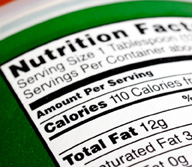How to Shop Healthy And Stay on Budget
 Modern grocery shoppers are more informed and educated than ever before, and many are doing a better job of avoiding foods with artificial ingredients and and/or added sugars. Yet, cost and convenience still play a large role in determining what ends up in the grocery cart, so a balancing act is on display in the aisles of today’s modern grocery store.
Modern grocery shoppers are more informed and educated than ever before, and many are doing a better job of avoiding foods with artificial ingredients and and/or added sugars. Yet, cost and convenience still play a large role in determining what ends up in the grocery cart, so a balancing act is on display in the aisles of today’s modern grocery store.
The Dietary Guidelines for Americans point to the fact that many adults lack essential nutrients like calcium, fiber, magnesium and vitamins A, C and D.
Fresh produce and fruit juice can fill the vitamin gap, and frozen juice concentrates can provide an affordable source of vitamins in a convenient, family-friendly form.
In fact, healthy eats that don’t cost a fortune allow families on a budget to increase their nutrient intake, thus lowering their risk for various health conditions.
“Research shows that good nutrition can help lower people’s risk for many chronic diseases,” says Christine Pfeiffer, the lead researcher in the Division of Laboratory Sciences in the CDC’s National Center for Environmental Health.
A vitamin D deficiency, for instance, can increase the risk for diseases such as osteoporosis, heart disease and even the seasonal flu. Pfeiffer adds, “… higher deficiency rates in certain age and ethnic groups are a concern and need additional attention.”
Innovative juice manufactures like Old Orchard Brands are helping to bridge the vitamin gap with better-for-you, affordable options. Its new line of Fruit & Veggie frozen concentrates combines carrot, sweet potato and beets together with peach, mango, blueberry and other juice favorites to provide a full serving of fruit and vegetables in each glass; and each serving costs less than $.50. The leading juice manufacturer also offers Old Orchard for Kids, a bottled line of juices featuring 50 percent less sugar, just 60 calories and the full recommended daily amount of vitamin C with each serving.
Today’s consumers are fortunate to find a number of new grocery options that don’t require a compromise between affordability and nutrition.
To find more tips for shopping on a budget, visit www.oldorchard.com. The site also has exercise information and recipes for fun, easy family dinners.
